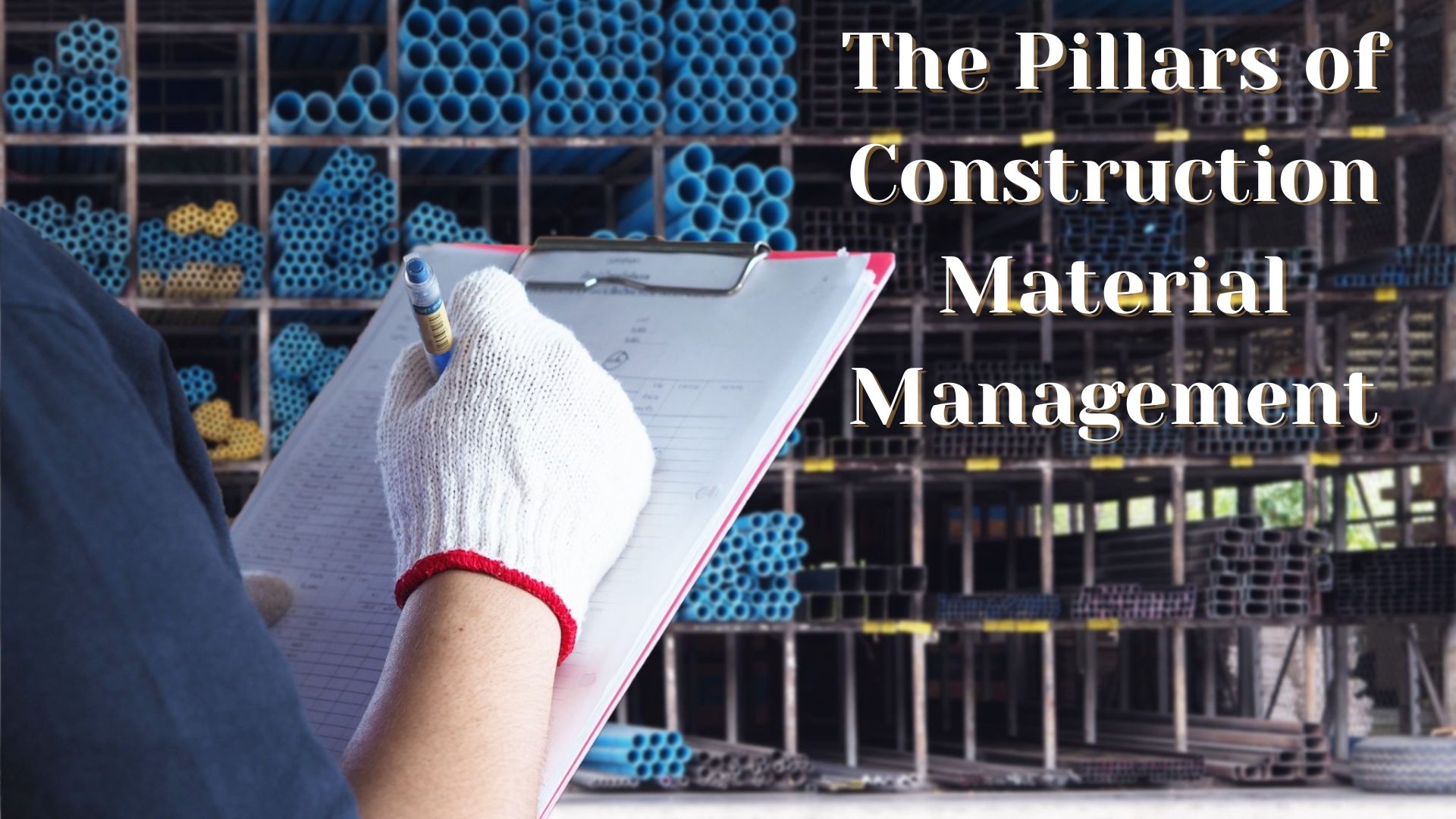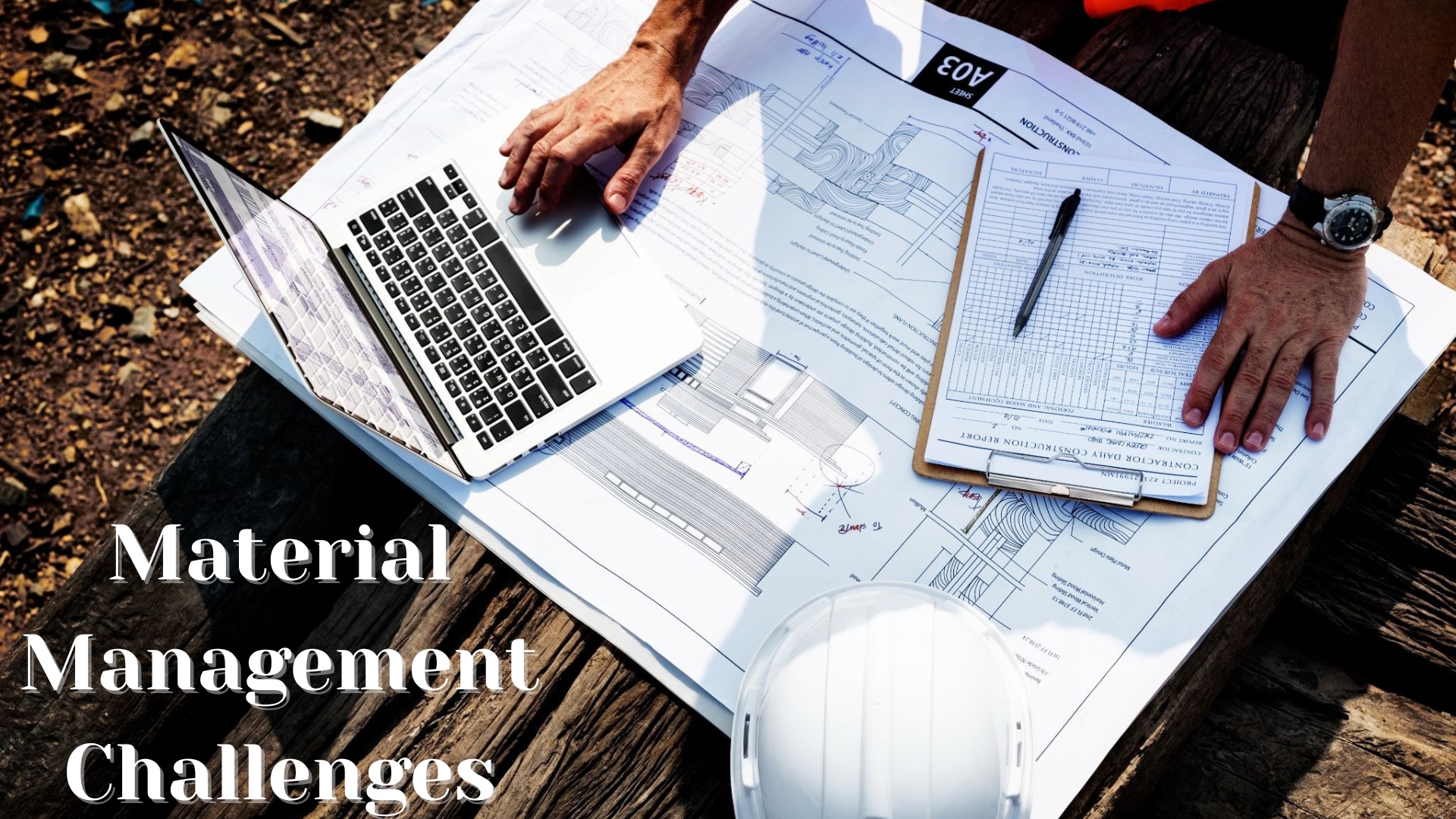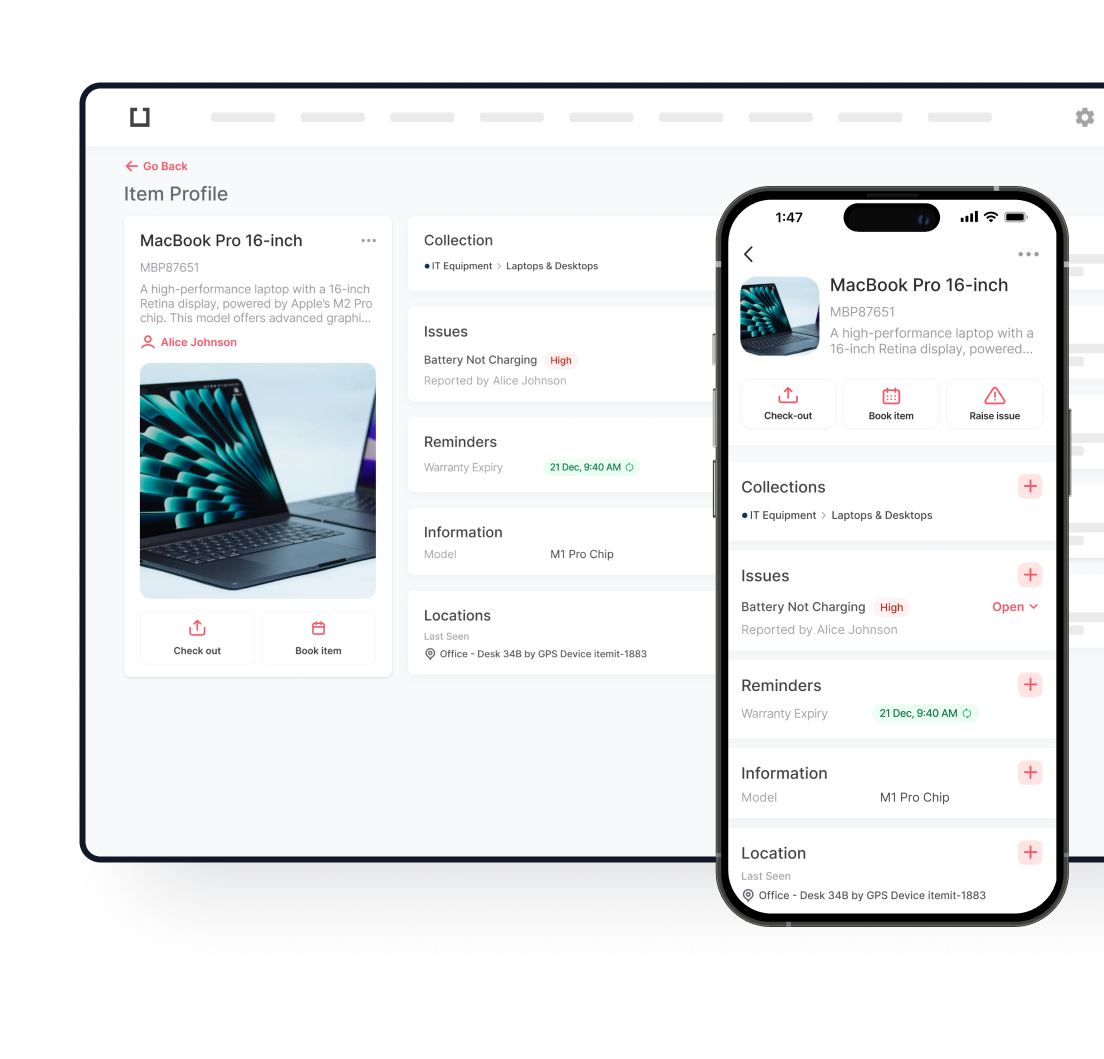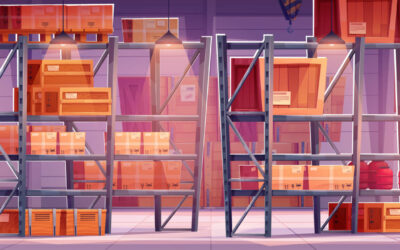
Construction projects fail most often due to poor planning around materials—not design flaws or worker shortages. Material management in construction determines which projects finish on time and which drain budgets through waste and delays. Mastering this discipline separates profitable contractors from those who constantly firefight supply issues.

Key Takeaways
- Material management in construction separates profitable projects from budget disasters. Success requires coordination across procurement, logistics, storage, and tracking.
- Accurate planning prevents both shortages that halt work and excess inventory that wastes capital. Smart contractors order materials to arrive just when crews need them, minimising storage time and handling costs.
- Supply chain materials management demands relationship-building with reliable suppliers who provide priority service during shortages and problem-solving when issues arise.
- Material control through organised storage, clear documentation, and accountability systems reduces losses from theft, damage, and simple misplacement. These improvements flow directly to bottom-line profitability.
- Technology works best when it responds to specific operational challenges rather than being adopted for its own sake. Choose systems that solve your actual problems, train teams thoroughly, and measure results through relevant metrics.
- Itemit digital tracking systems improve accuracy while reducing labour costs associated with manual inventory management. Real-time visibility into material locations and equipment status prevents the time waste of searching for misplaced items.
What Is Material Management?
This practice encompasses every decision and action involving construction materials from initial procurement through final installation. The process starts when estimators calculate quantities during bidding and continues until the last piece of equipment leaves the jobsite.
Material managers coordinate multiple moving parts simultaneously. They negotiate with suppliers, schedule deliveries to match construction phases, verify incoming shipments, organise storage areas, and track consumption rates. Each task connects to the next, creating a chain where one broken link disrupts the entire sequence.
Success here depends on accuracy and timing. If you order too early, the materials will be left exposed to the weather and theft. Order too late, and crews stand idle while trucks battle traffic. Get quantities wrong, and you either waste money on excess or halt work waiting for emergency deliveries at premium prices.
Planning and Procurement
Material requirements flow directly from project drawings and specifications. Quantity takeoffs translate blueprints into shopping lists, detailing every beam, bag of cement, and electrical fixture needed. Estimators must account for waste factors—concrete doesn’t pour perfectly, lumber gets cut with offcuts, and tiles break during installation.
Procurement teams balance cost against quality and availability. Cheap materials that fail inspection create expensive rework. Premium materials that exceed requirements burn profit margins. Lead times complicate decisions—steel fabrication might need 12 weeks while standard materials arrive in days. Smart scheduling sequences orders so materials arrive just before crews need them.
Transportation and Logistics
Getting materials from suppliers to jobsites presents logistical puzzles. Urban sites might have limited access, requiring smaller trucks and more frequent deliveries. Remote projects need careful coordination to avoid costly return trips.
Supply chain materials management becomes critical when projects span multiple locations or phases. A project manager might coordinate deliveries to three buildings while tracking materials in transit, in storage, and installed. Weather adds another variable—rainy seasons require covered storage, and extreme temperatures affect concrete mix designs and adhesive curing.
Storage and Handling
Materials deteriorate when stored improperly. Lumber warps in moisture. Metal corrodes. Cement hardens if the bags tear. Each material type demands specific storage conditions.
Material control starts with organised storage. Labelled zones, clear pathways, and systematic arrangements let teams find what they need quickly. Random piles create confusion, slow progress, and increase loss rates. Materials should sit near where crews will use them, reducing double-handling while maintaining security against theft.
Tracking and Documentation
Paper-based tracking systems fail on active construction sites. Rain-soaked spreadsheets, misplaced delivery tickets, and illegible handwriting create information gaps that lead to reordering materials already onsite or losing track of expensive equipment.
Digital material management systems solve these problems through real-time updates accessible to all stakeholders. Modern tracking captures delivery dates, installation locations, equipment checkout records, maintenance schedules, warranty information, and documentation photos. The benefits of an equipment tracking system extend beyond simple location awareness—they enable proactive management decisions based on actual utilisation data
Quality Control and Waste Reduction
Materials must meet specifications, or entire sections of work face rejection and replacement. Testing protocols verify that concrete achieves design strength, steel meets grade requirements, and finishes match approved samples. Catching defects before installation saves exponentially more than accepting substandard materials.
Waste reduction directly impacts profitability. Accurate cutting lists minimise lumber waste. Careful handling reduces breakage. Smart ordering prevents excess materials that never get used. Some waste becomes unavoidable—sawdust from cutting, concrete remaining in mixers, broken tiles during installation. But deliberate waste from over-ordering, careless handling, or theft drains profit margins project after project.

How Supply Chain Materials Management Shapes Project Success
Construction supply chains stretch across regions and countries. A single project might source structural steel from one state, windows from another country, local concrete and aggregates, specialised HVAC equipment from specific manufacturers, and finish materials from multiple suppliers.
Managing these diverse sources requires coordination skills beyond traditional construction knowledge. Supply chain disruptions—whether from natural disasters, manufacturing delays, or transportation issues—ripple through schedules, often without warning.
Contractors who master supply chain materials management build supplier relationships that provide advantages during shortages. Preferred customers get allocation priority when materials become scarce. Long-term relationships often yield better pricing and payment terms.
Communication forms the backbone of supply chain success. Suppliers need accurate forecasts to plan production. Contractors need realistic lead times to schedule work. Both parties benefit from transparency about changes, whether accelerated timelines or reduced quantities.
Technology Revolutionising Material Management
Cloud-based asset tracking platforms replace clipboards and spreadsheets with mobile databases that update in real-time. Modern systems use QR codes or barcodes to create scannable records accessible via smartphone, letting field crews check out tools, report issues, and update locations instantly.
Key Benefits of Digital Tracking
Manual tracking systems lose 10-15% of materials to misplacement or theft annually. Digital platforms reduce these losses through timestamped accountability. Labour costs drop as crews stop wandering sites hunting for equipment—they simply check the system and retrieve items directly.
Automated maintenance reminders prevent costly equipment failures and extend lifespans substantially. Proper construction equipment tracking ensures a $50,000 excavator lasting 8 years instead of 6 saves roughly $12,500 annually in depreciation costs. Offline functionality addresses spotty cellular coverage, syncing data automatically once connectivity returns.
Some platforms offer public-facing features for fixed installations. Anyone can scan a QR code to report issues, even without system access. For contractors managing public infrastructure or building systems, this crowdsourced reporting catches problems earlier.
How Digital Platforms Improve Core Processes
Implementing digital asset tracking fundamentally changes operational efficiency. These platforms demonstrate how construction equipment tracking transforms daily workflows. Accuracy improves because human recording errors disappear—scans capture data correctly every time. Labour costs decrease as administrative staff spend less time reconciling paperwork and more time on value-adding activities.
The benefits of an equipment tracking system compound over time. Initial improvements in theft prevention and location awareness lead to better maintenance compliance. Better maintenance extends equipment life, reducing capital expenditure on replacements. Longer equipment lifespans improve project cost predictability since teams can rely on existing assets rather than rental equipment.
Increasing the lifespan of construction equipment through systematic tracking produces measurable returns. A $50,000 excavator that lasts 8 years instead of 6 through proper maintenance tracking saves roughly $12,500 annually in depreciation costs. Multiply these savings across entire equipment fleets, and the financial impact justifies system investment many times over.
Data visibility enables proactive management rather than reactive firefighting. Managers identify utilisation patterns—which equipment sits idle, which gets overused, where bottlenecks occur. These insights drive purchasing decisions, rental vs. ownership calculations, and crew assignments. Projects become more profitable because resources are deployed more efficiently.
Overcoming Common Material Management Challenges
Inaccurate Estimates
Quantity takeoffs determine everything downstream. Errors here multiply throughout the project. Underestimating creates shortages that halt work. Overestimating wastes money on unused materials. Experienced estimators develop intuition for waste factors, but software that learns from historical data provides more consistent accuracy.
Poor Communication
Information silos between office staff, field crews, and suppliers create expensive misunderstandings. The office orders materials based on outdated schedules. Field crews modify designs without notifying procurement. Suppliers deliver to the wrong addresses because no one has updated the locations.
Breaking down these silos requires systems where everyone accesses the same information. When changes happen, all stakeholders see updates immediately rather than discovering problems through failed deliveries or missing materials.
Theft and Loss
Construction sites attract thieves. Small valuable items—power tools, copper wire, brass fixtures—disappear regularly. Even bulky materials vanish from poorly secured sites. Insurance covers some losses, but premiums rise with claim frequency.
Preventing theft combines physical security with tracking accountability. Fenced sites with controlled access slow opportunistic thieves. Asset tracking systems identify when materials leave sites without authorisation. The combination substantially reduces losses compared to unmonitored sites.
Last-Minute Changes
Design changes happen on nearly every project. Owners change minds. Building inspectors require modifications. Field conditions differ from drawings. Each change cascades through material requirements.
Flexible systems accommodate changes without chaos. When modifications trigger automatic updates to ordering, inventory, and schedules, teams adapt smoothly. Rigid systems turn minor changes into major disruptions requiring manual coordination across multiple platforms.

Implementing Effective Material Management Practices
Construction firms that follow proven best practices consistently outperform competitors. These approaches work across project types and company sizes, adapting to specific operational needs.
Start with Accurate Documentation
Detailed material specifications prevent confusion and errors. “Install wood flooring” leaves too much interpretation. “Install 3/4-inch solid red oak flooring, 2-1/4-inch width, unfinished, grade select and better” eliminates ambiguity.
Complete documentation includes manufacturers and model numbers, approved substitutions, installation instructions, quality standards, and testing requirements.
Build Supplier Partnerships
Treating suppliers as adversaries creates lose-lose scenarios. Beating them down on price might win short-term savings but loses long-term advantages. Reliable suppliers who trust contractors provide priority during shortages, credit terms that ease cash flow, problem-solving when issues arise, and product knowledge that prevents mistakes.
Regular communication keeps relationships strong. Share project pipelines so suppliers can plan capacity. Provide feedback on deliveries—both problems and successes. Pay invoices promptly to maintain goodwill.
Train Teams Thoroughly
Material management fails when crews don’t understand or follow procedures. Training must cover how to check materials in and out, proper storage methods for different materials, recognition of damaged or defective materials, documentation requirements, and security protocols. Regular refreshers prevent drift as procedures become habits.
Monitor Key Metrics
Increasing the lifespan of construction equipment through consistent tracking delivers substantial returns. Monitor equipment utilisation patterns to identify which assets sit idle, which get overused, and where bottlenecks occur. These insights drive smarter purchasing decisions and resource allocation.
Embrace Technology Strategically
Technology solves specific problems—not all problems. Evaluate tools based on the challenges facing your operations. Small contractors might need only basic inventory tracking. Large firms managing fleets and multiple sites require sophisticated material management systems with equipment tracking, maintenance scheduling, and integration with accounting software.
Building Better Projects Through Smarter Material Management
Construction excellence demands more than skilled labour and quality materials. How you manage those materials throughout the project lifecycle determines whether you finish on schedule and budget or limp across the finish line depleted and unprofitable.
The contractors thriving in competitive markets recognise that material management represents a competitive advantage, not just an administrative burden. They invest in systems, training, and processes that turn material handling from a cost centre into a profit generator.
Start wherever your operation stands currently. Paper tracking? Move to digital. Random storage? Implement organisational systems. Reactive ordering? Develop planning procedures. Each improvement compounds, creating operations that consistently deliver projects others struggle to match.
If you would like to learn more about asset tracking talk to us today. You can reach our helpful team now at: team@itemit.com. Alternatively, you could also complete the form below to sign up for our 14-day free trial.

Try itemit
Choose a better way to track
your assets.
Start your free 14-day trial now!
Frequently Asked Questions
How much should material management reduce project costs?
Well-executed material management typically reduces total project costs by 2-5% through waste reduction, theft prevention, and improved labour efficiency. Larger projects see greater absolute savings. A $10 million project saving 3% returns $300,000—enough to fund dedicated material management staff and systems while still improving profit margins.
What's the biggest mistake contractors make with material management?
Under-investing in tracking and organisation while the project is active, then spending exponentially more later fixing problems. Contractors who skip systematic material control often cannot locate materials they know they purchased, leading to duplicate orders. They also struggle to identify theft until losses accumulate substantially.
Can small contractors benefit from digital material management systems?
Absolutely. Small firms often benefit more because they lack dedicated office staff to manage paper systems. Cloud-based platforms scale to any size operation, providing sophisticated tracking capabilities without requiring IT infrastructure or dedicated system administrators.
How do material managers handle volatile pricing?
Strategic purchasing protects against price fluctuations. Lock in prices for major materials early through bulk purchases or guaranteed pricing agreements with suppliers. For commodities subject to rapid price changes—lumber, steel, copper—consider purchasing options or hedging strategies. Include price escalation clauses in contracts when appropriate, sharing volatility risk with owners rather than absorbing all exposure.
What training do material managers need?
Effective material managers combine construction knowledge with logistics understanding. They must read drawings to verify quantities, understand installation sequences to schedule deliveries, and know material properties to specify proper storage. Software proficiency matters increasingly as digital systems replace paper tracking. Strong communication skills prove valuable since material managers coordinate between field crews, office staff, and external suppliers daily.

Keep Learning
itemit Blog
Tips, guides, industry best practices, and news.
Key Strategies for Successful Construction Business Development
Smart strategies for construction business development that help attract clients, increase project success, and drive sustainable growth in a competitive market.
Optimising Construction Storage for Better Project Management
Essential construction storage methods that enhance site management, improve workflow efficiency, reduce material loss, and keep projects on schedule and budget.
What is RFP in Construction? Process Steps and Best Practices
Learn about the RFP process in construction, key steps involved, and best practices to create successful bids that ensure smooth project execution and efficiency.



